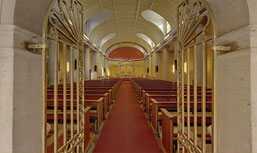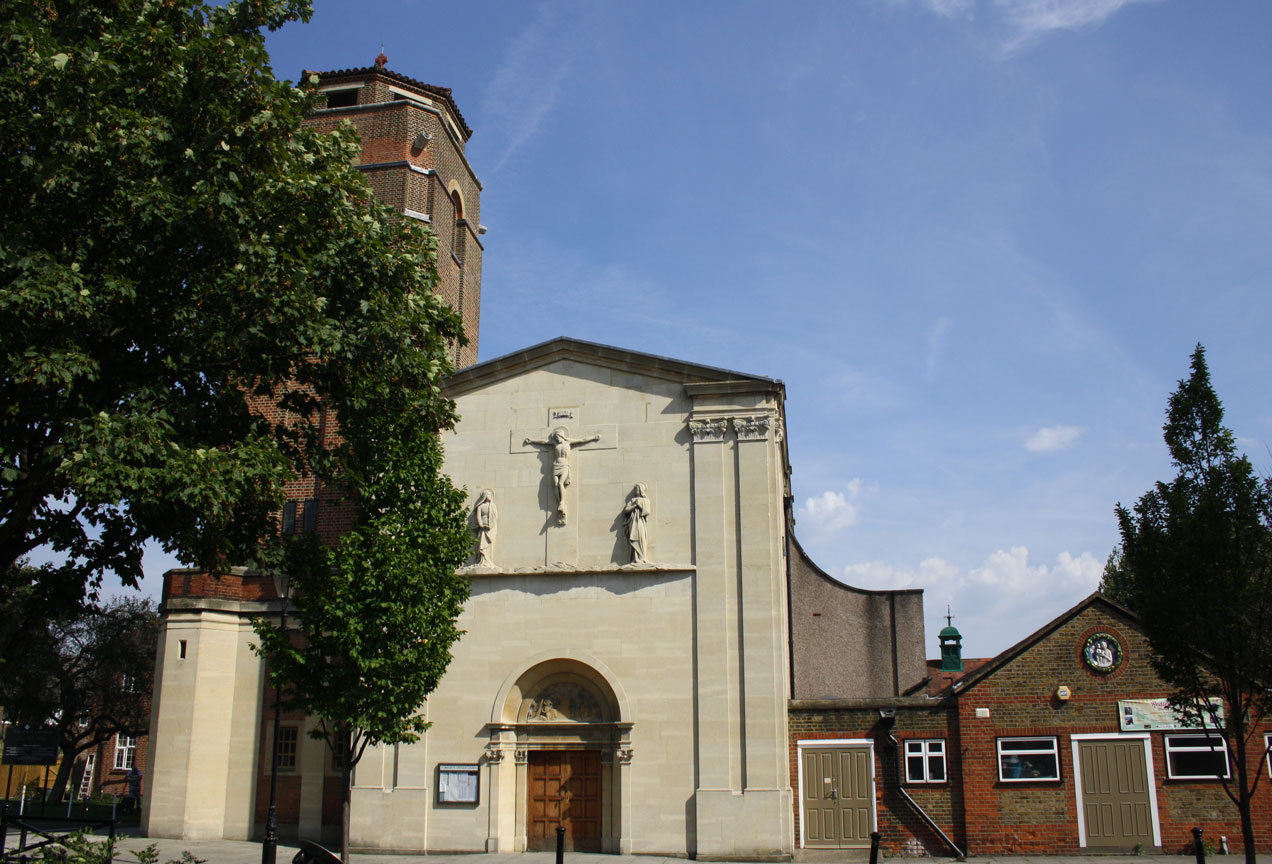Written by Stuart Bagnall, January 2006
 | St Bridget of Sweden is the patron saint of our parish, of the Swedish nation and of Europe but she is not so well known as she deserves to be. Perhaps this is because she is often confused with the popular Irish saint, Brigid. Perhaps it is because she was a woman. Perhaps it is because she lived 700 years ago; perhaps because she came from a country that was on the very edge of Christendom. |
The Church creates saints not as a reward for their virtues and hard work or suffering - their reward is eternal life - but as examples to us of how the Christian life should be led.
Saint Bridget of Sweden deserves to be better known because she provides an example in so many spheres of life. Woman, wife, mother, friend of the poor, counsellor, visionary, reformer of the Church, politician, author, penitent, founder of the religious order, promoter of learning, pilgrim, migrant - her rich life affords examples of all these.

 | Bridget was born about 700 years ago in Upland, Sweden, the daughter of the provincial governor. She was educated and prepared for the life of a noblewoman in the feudal world in which she lived. She was married at fourteen to Ulf Gudmarsson who came from a similar background and shared her deep faith and religious commitment. The marriage was happy and successful and Bridget gave birth to eight children, four boys and four girls.
|
| When she was in her early thirties, she was summoned to be lady-in-waiting to the new Queen of Sweden, Blanche of Namur. Bridget and her family moved to the royal court. She found King Magnus and his new wife self-indulgent and irresponsible and she set about trying to influence the Queen and, through her, the King towards a more moral life and a more responsible attitude towards her duties. |  |
 | Bridget was aware of her vocation because she had spiritural experiences - she called them visions - which she understood as personal revelations from God. The Church is always suspicious of such experiences because quite properly it regards itself as the unique channel of God's self-revelation, but Bridget was steeped in the scriptures and entirely orthodox in her faith. The revelations did not always impress her contemporaries, however, and some at court saw her as a dreamer, forgetting perhaps the important part that dreams play in both the Old and New Testament stories. Finding that her advice was unwelcome, Bridget and Ulf set off on pilgrimage, first to the shrine of St Olaf and then to Santiago di Compostela in Spain. When her husband fell dangerously ill on the return journey, they agreed that if they were spared they would both enter monastic life. Ulf did recover, only to die shortly after his return to Sweden, in the Cistercian abbey in Alvastra. |
| Bridget remained at Alvastra for four years after Ulf's death, adopting the role of penitent. At this time, her visions became more disturbing and insistent and she began to doubt their divine origin. She sought guidance from trusted spiritual advisers. They recognized that the visions were authentic and encouraged Bridget to follow where they were leading her. Moreover, they suggested that she should have them written down and preserved for posterity. This was done by her chaplain and secretary, Peter of Alvastra. |  |
 | Her retirement did not last because she became convinced that she had to go back to the royal court and issue a warning to the king and his entire household that God was losing patience with their sinful and corrupt behaviour. Like Jonah at Ninevah, however, she was sucessful and the king improved his behaviour, instituted reform and generously endowed her project for a new monastery at Vadstena in which both nuns and monks would live under austere rule of life. The woman and men of the order lived in separate enclosures but shared a chapel and drew spiritual strength from their common vocation. All surplus income had to be given to the poor, fancy architecture was forbidden but, significantly, there was to be no restriction on the expenditure of books. |
| In the Jubilee Year of 1350, Bridget decided to go to Rome. At this time, the popes had removed their court from Rome to Avignon in southern France as a result of political conflict and interference in church affairs. Bridget established herself in Rome and began campaigning for the independence of the papacy and its return to its ancient home. She was outspoken in her criticism of rulers, bishops and even the pope. She was, all the while, working tirelessly amongst the poor of the city. Inspired by further visions she went on to visit Assisi and then made a tour of all the shrines in Italy. |  |
 | In 1371, she felt a call to visit the Holy Land and embarked on an expedition, supported by her daughter Catherine and two of her sons. Disaster struck twice. Her favourite son became entangled in a scandalous relationship with the Queen of Naples which ended only when he died there of a fever. Then, when the party resumed the journey, their ship was wrecked off the coast of the Holy Land and Bridget nearly drowned. In spite of these setbacks, Bridget and her party pressed on and spent more than a year visiting the holy places, only returning to Rome in 1373 where she died on 23 July, aged 71. She was canonized only 18 years later on 7 October 1391 by Pope Boniface IX. |
The Order she founded, the Brigettines, never grew large but retained a high reputation for holiness and scholarship. The only English foundation of the Order was here in Isleworth at Syon Abbey, which stood on the site of Syon House.
She was a remarkable woman by any standards. She was, you could say, a woman for all seasons. |  |
Churches dedicated to St Bridget of Sweden
If you come across another church dedicated to St Bridget of Sweden - of any denomination - please send the details to This email address is being protected from spambots. You need JavaScript enabled to view it. so that we can add it to the list. Those we have so far are:















